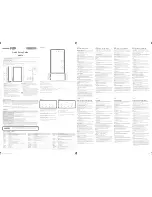
9
In the Type I sensor (SULF-xxx) the signal is generated by oxidation
of H
2
S directly on the anode in the tip of the sensor . The type
I sensor is sensitive to hydrogen and should not be used in
environments with high hydrogen concentrations . However,
the type I sensor has a better signal to noise ratio, has a longer
expected lifetime than the type II sensor and is not sensitive to
light .
In the Type II sensor (H
2
S-xxx) the H
2
S, that enters through the
membrane in the tip, is converted to HS- ions in the alkaline
electrolyte . This is immediately oxidized by ferricyanide, producing
sulfur and ferrocyanide . The sensor signal is generated by
re-oxidation of ferrocyanide at the anode in the tip of the sensor
(Jeroschewski et al . 1996) . The internal guard anode facilitates
a constant ratio of ferri- to ferrocyanide in the electrolyte,
thus minimizing the zero-current . The electrolyte in the type
II microsensor is photo-degraded by high light intensities –
especially UV and blue light . This is results in a higher signal in
light than darkness for the same amount of H
2
S . The sensors are
painted black to protect them against light . However, light may
still enter the sensor through the tip, which it is not possible to
paint .
For calculation of total sulfide concentrations, it is necessary to
know the pH . When measuring H
2
S in pH gradients, pH should
be measured along the same profile with a pH microsensor (e .g .
pH-10/pH-25) .










































